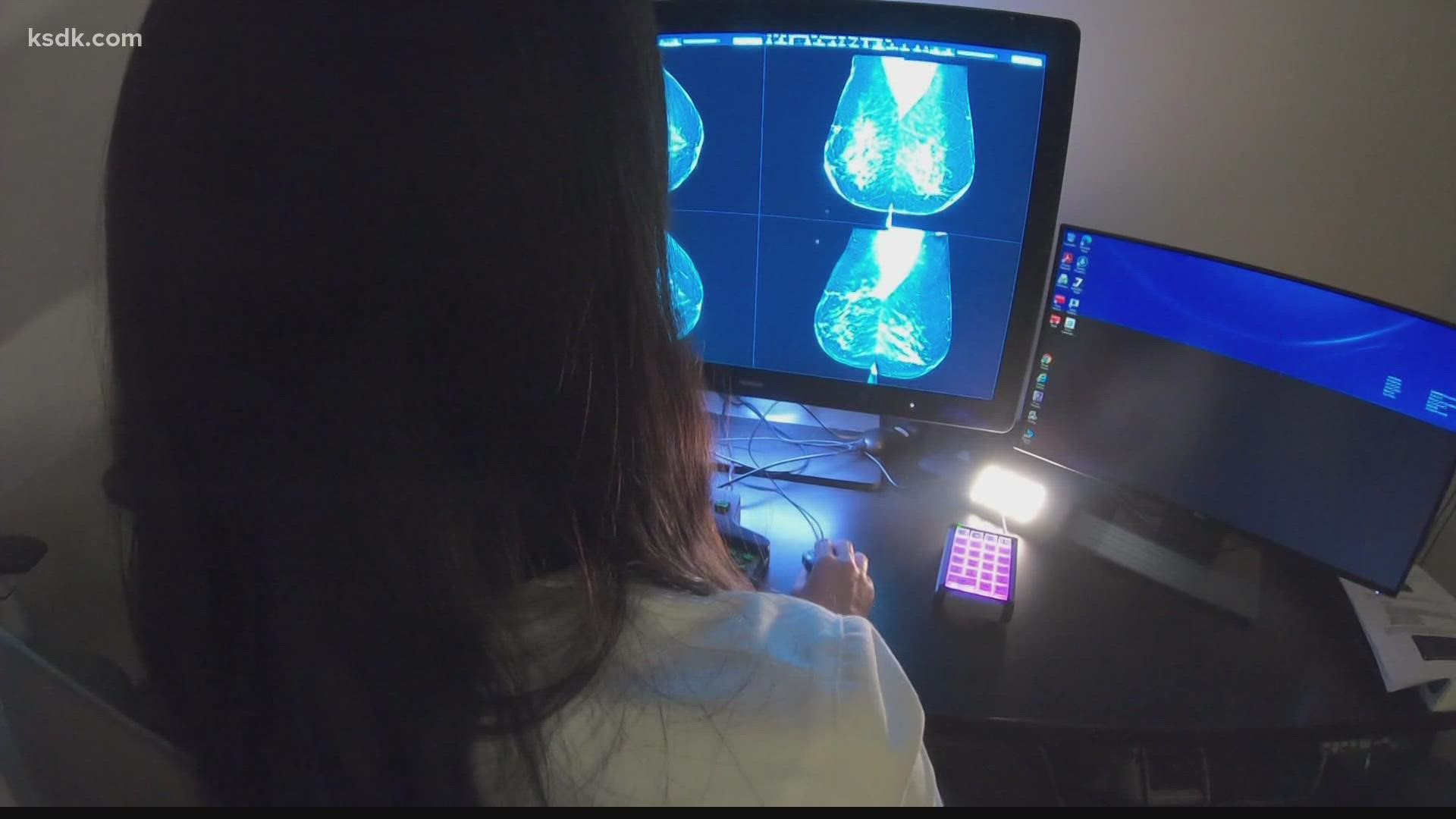ST. LOUIS — In the last month, the I-Team reported the stories of three women who say a local imaging center missed their breast cancer. That clinic was ordered by the FDA to stop performing mammograms altogether this summer.
While the accounts of breast cancer patients shared with 5 On Your Side are connected to a single facility, what they experienced has the potential to happen anywhere. Experts estimate that, even under the best conditions, a mammogram can be only 80 percent effective in detecting breast cancer.
“There are, unfortunately, scenarios where it's not just that the cancer is missed, but that it can't be seen on the mammogram,” said Dr. Debbie Bennett, chief of breast imaging at Washington University in St. Louis. “One of the most common scenarios is in women that have very dense breast tissue.”
Mammogram technology has advanced in recent years, and upgraded equipment can make a big difference, Bennett added.
“We always advise patients that they should have a 3-D mammogram. It's more accurate than a 2-D mammogram,” she said. “It essentially gives you a look through each individual layer of the breast tissue. So, there have been a lot of studies looking at whether 3-D mammography performs better than 2D mammography does, and most of the data show that you can find more cancers with the 3-D mammogram, but also that there are fewer false positives. So fewer cases where we're asking a woman to come back for more pictures and then telling her that it's fine, ultimately.”
Experts tell the I-Team that the type of action the FDA took at Watson Imaging Center, where the three breast cancer patients got their mammograms, is rare. The order to cease conducting mammograms followed an audit by the American College of Radiology, which uncovered “image quality” issues.
“What they'll do is ask for a random sample of patient mammograms on a specific day, and they just pick a random day and they ask for you to send them in. And then an expert at the ACR looks at them and decides whether they do, in fact, meet standards,” said Bennett.
The time frame for an ACR audit of mammograms or action from the FDA is usually recent, and Bennett says that for at least one of the patients who reached out to the I-Team, her mammogram occurred too long ago for the FDA to take action.
Bennett advises people to go to a specialized breast center for mammogram needs.
“In most instances, if somebody is feeling a lump, we would do both the mammogram and the ultrasound,” said Bennett. “Breast ultrasound is an entirely different test from a mammogram that doesn't have the same issues with breast density that a mammogram might. And so, we would look with ultrasound specifically at the area that the patient’s complaining about.”
ACR reviews at mammography providers generally occur every three years, with their accreditation cycle. There is a possibility for additional spot-checks on a more frequent schedule. The ACR declined to tell the I-Team what initiated the review at Watson Imaging Center. In addition to audits from the ACR, all imaging clinics are inspected by the State of Missouri at least once a year.

